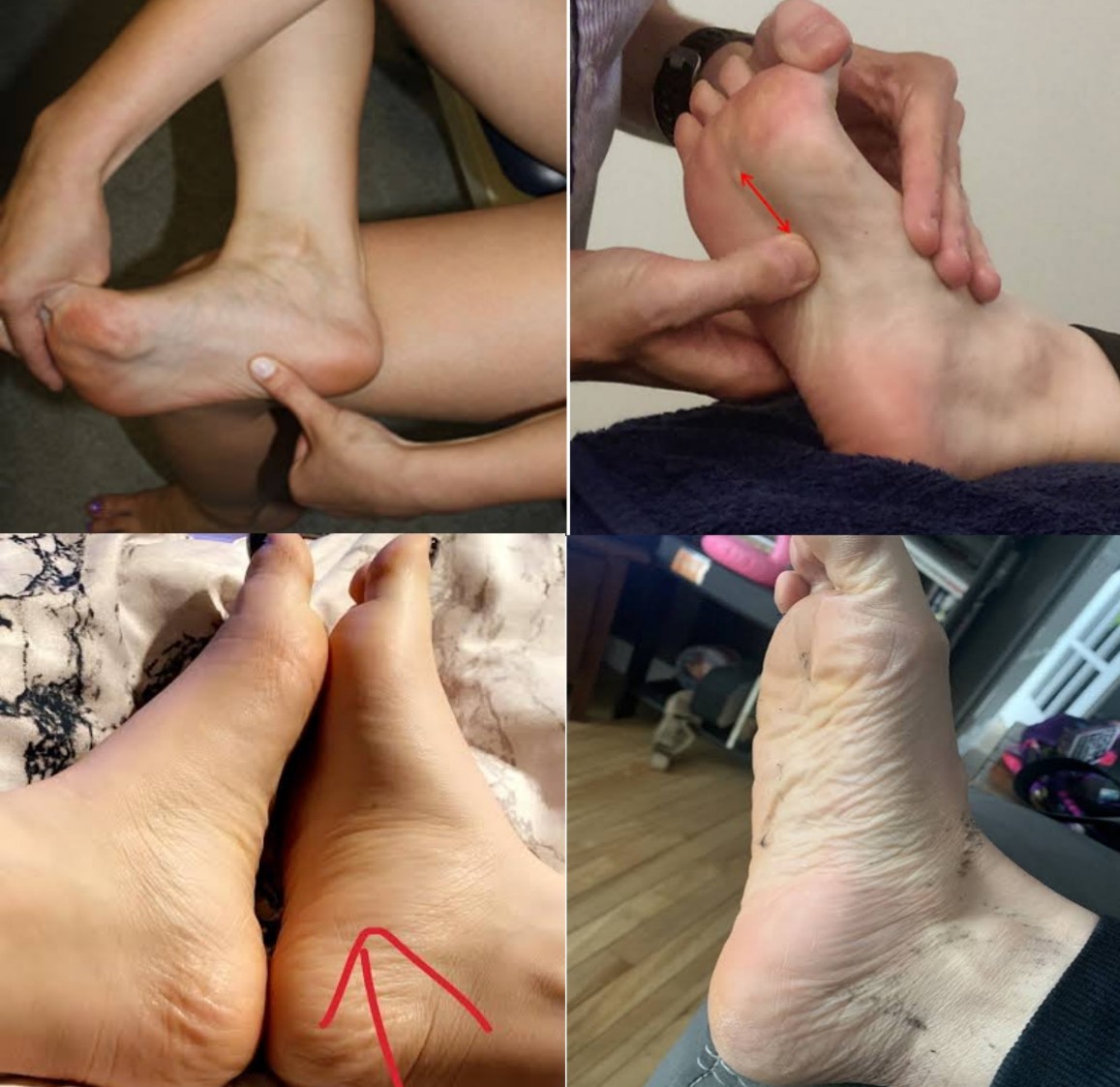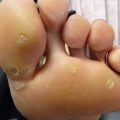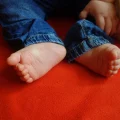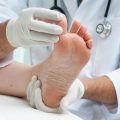Plantar fasciitis occurs when the strong band of tissue that supports the arch of your foot becomes irritated and inflamed. The plantar fascia is a long, thin ligament that lies directly beneath the skin on the bottom of your foot. It connects the heel to the front of your foot and supports the arch of your foot.
The plantar fascia is a ligament that lies beneath the skin on the bottom of your foot. The word “fasciitis” means “inflammation of the fascia of a muscle or organ” while “plantar” relates to the sole of the foot. Two million patients get treatment for plantar fasciitis, annually. That makes it the most common cause of heel pain. It’s common especially for athletes — specifically, runners. The repetitive motion of pushing off with your feet can injure the tissues.
The plantar fascia is designed to absorb the high stresses and strains we place on our feet. But, sometimes, too much pressure damages or tears the tissues. The body’s natural response to injury is inflammation, which results in the heel pain and stiffness of plantar fasciitis.
Risk Factors
In most cases, plantar fasciitis develops without a specific, identifiable reason. There are, however, many factors that can make you more prone to the condition:
- Tighter calf muscles that make it difficult to flex your foot and bring your toes up toward your shin
- Obesity
- Very high arch
- Repetitive impact activity (running/sports)
- New or increased activity
How To Cure Plantar Fasciitis In One Week
Unfortunately, there is no cure for plantar fasciitis in one week though some people can experience great improvement within one week. More than 90% of patients with plantar fasciitis will improve within 10 months of starting simple treatment methods.
Rest. Decreasing or even stopping the activities that make the pain worse is the first step in reducing the pain. You may need to stop athletic activities where your feet pound on hard surfaces (for example, running or step aerobics).
Ice. Rolling your foot over a cold water bottle or ice for 20 minutes is effective. This can be done 3 to 4 times a day.
Nonsteroidal anti-inflammatory medication. Drugs such as ibuprofen or naproxen reduce pain and inflammation. Using the medication for more than 1 month should be reviewed with your primary care doctor.
Exercise. Plantar fasciitis is aggravated by tight muscles in your feet and calves. Stretching your calves and plantar fascia is the most effective way to relieve the pain that comes with this condition.
Exercises to Help Plantar Fasciitis
You can get pain relief for plantar fasciitis through stretches and exercises that strengthen this area of the foot. By loosening the plantar fascia ligament, you can help prevent further stress and inflammation that causes foot pain.
Toe Curls with a Towel
The first exercise for pain relief for plantar fasciitis you can try is toed curls with a towel.
Step 1: Put a small towel on the floor, and sit in a chair so that your feet are over the towel.
Step 2: Using your affected foot, scrunch your toes onto the towel and try to pull it toward you.
Step 3: Relax your toes and let the towel go. Repeat this motion 10 times, once or twice daily.
Gastrocnemius Stretch
One of the best stretches for plantar fasciitis is the gastrocnemius stretch. This stretch is very simple and can be done anywhere with a wall to support you.
Step 1: Stand facing the wall, place your hands on it, and stretch your affected leg back. Both of your feet should be planted on the ground facing the wall. Your unaffected leg should be bent at the knee.
Step 2: Lean toward the wall so that you feel a stretch in the calf muscle of your back leg.
Step 3: Hold this pose for 30 seconds and then relax. Repeat it six times a day.
Tennis Ball Roll
For this exercise, you’ll need a tennis ball or another small ball of similar size. If you don’t have a ball handy, you can use a water bottle or other cylindrical object instead.
Step 1: Sit in a chair and place the ball under your affected foot.
Step 2: Roll the ball back and forth under the arch of your foot so that you can stretch out the plantar fascia ligament.
Step 3: Continue rolling for three to five minutes. You can do this stretch twice a day.
Toe Extension
The toe extension is one of the easiest stretches for plantar fasciitis since you can do it anywhere at any time.
Step 1: Sit on the floor or on a chair with the affected leg crossed over the unaffected leg.
Step 2: Hold your toes with your fingers of one hand and bend your toes and ankle up as far as you can. You want to feel a stretch in your calf and the arch of your foot.
Step 3: Use your free hand to massage the arch of your foot.
Step 4: Hold this for 10 seconds and then relax. Continue this pattern for two or three minutes, two to four times a day.
Plantar Fascia Stretch on a Step
For this stretch, you need to stand somewhere with a step.
Step 1: Stand on a step and keep your unaffected foot flat. Slide the affected foot back until the ball of the foot is resting on the edge of the step.
Step 2: Lower the heel of the affected foot down toward the floor until you feel a stretch in the calf and the arch of the foot.
Step 3: Hold this stretch for 30 seconds. You can repeat this exercise four to six times a day.
Cortisone injections. Cortisone, a type of steroid, is a powerful anti-inflammatory medication. It can be injected into the plantar fascia to reduce inflammation and pain. Your doctor may limit your injections. Multiple steroid injections can cause the plantar fascia to rupture (tear), which can lead to a flat foot and chronic pain.
Supportive shoes and orthotics. Shoes with thick soles and extra cushioning can reduce pain with standing and walking. As you step and your heel strikes the ground, a significant amount of tension is placed on the fascia, which causes microtrauma (tiny tears in the tissue). A cushioned shoe or insert reduces this tension and the microtrauma that occurs with every step. Soft silicone heel pads are inexpensive and work by elevating and cushioning your heel. Pre-made or custom orthotics (shoe inserts) are also helpful.
Soft heel pads can provide extra support.
Night splints. Most people sleep with their feet pointed down. This relaxes the plantar fascia and is one of the reasons for morning heel pain. A night splint stretches the plantar fascia while you sleep. Although it can be difficult to sleep with, a night splint is very effective and does not have to be used once the pain is gone.
Physical therapy. Your doctor may suggest that you work with a physical therapist on an exercise program that focuses on stretching your calf muscles and plantar fascia. In addition to exercises like the ones mentioned above, a physical therapy program may involve specialized ice treatments, massage, and medication to decrease inflammation around the plantar fascia.
Extracorporeal shockwave therapy (ESWT). During this procedure, high-energy shockwave impulses stimulate the healing process in damaged plantar fascia tissue. ESWT has not shown consistent results and, therefore, is not commonly performed.
ESWT is noninvasive—it does not require a surgical incision. Because of the minimal risk involved, ESWT is sometimes tried before surgery is considered.





